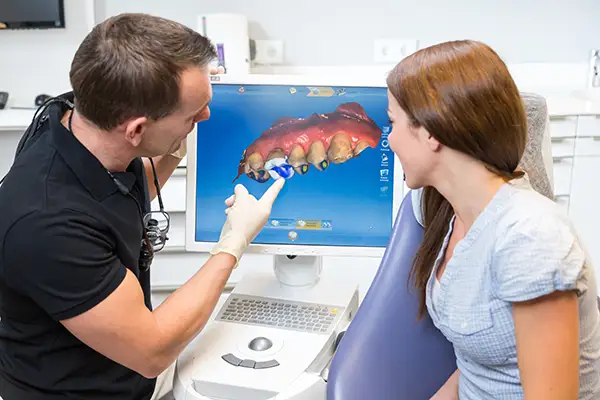What's Lurking Inside a Cavity?
Posted on 9/15/2025 by Parkside Dental |
 Have you ever wondered what a cavity is beyond just a dark spot on your teeth? While we often think of cavities as simple holes, they're actually much more complex than that. Understanding what's happening inside a cavity can help you take better care of your teeth and prevent future problems. Have you ever wondered what a cavity is beyond just a dark spot on your teeth? While we often think of cavities as simple holes, they're actually much more complex than that. Understanding what's happening inside a cavity can help you take better care of your teeth and prevent future problems.
From Plaque to Pit: How Cavities Form
Cavities are caused by a sticky film called plaque that constantly forms on your teeth. This plaque is made up of bacteria, food particles, and saliva. If plaque isn't removed regularly through brushing and flossing, it hardens into a substance called tartar or calculus. Tartar is much more difficult to remove than plaque and provides a haven for even more bacteria to thrive.
These bacteria feed on sugars in your food and produce acid as a waste product. This acid eats away at the enamel, the hard outer layer of your teeth, creating a hole – the cavity.
What Happens Inside the Cavity?
As the cavity grows, it can reach the inner layers of your tooth, called dentin and pulp. Dentin is a softer tissue than enamel and is more sensitive. When a cavity reaches the dentin, you may experience sensitivity to hot, cold, or sweet foods and drinks.
The pulp is the innermost layer of your tooth and contains nerves and blood vessels. If the cavity reaches the pulp, it can become inflamed and infected, causing intense pain. This can lead to an abscess, a pocket of pus that forms at the root of the tooth.
Prevention is Key
Fortunately, cavities are largely preventable. With good oral hygiene habits and regular dental checkups, you can greatly reduce your risk of developing cavities. Here are some key steps you can take:
| • |
Brush your teeth twice a day for two minutes each time. Use a fluoride toothpaste and be sure to brush all surfaces of your teeth. |
| • |
Floss once a day. Flossing removes plaque and food particles from between your teeth, where your toothbrush can't reach. |
| • |
Eat a healthy diet. Limit sugary foods and drinks, and choose nutrient-rich foods that support your oral health. |
| • |
Visit your dentist regularly. Your dentist can examine your teeth for signs of cavities and provide professional cleanings to remove plaque and tartar. |
Early Detection and Treatment
If you do develop a cavity, catching it early is essential. Early cavities can often be treated with fillings, which are relatively simple and painless procedures. However, if a cavity is left untreated, it can cause serious problems, including toothaches, infections, and even tooth loss.
By understanding what's happening inside a cavity and taking steps to prevent them, you can keep your smile healthy and bright for years to come. Remember, prevention is always better than cure, so make oral care a priority in your daily routine.
|
|